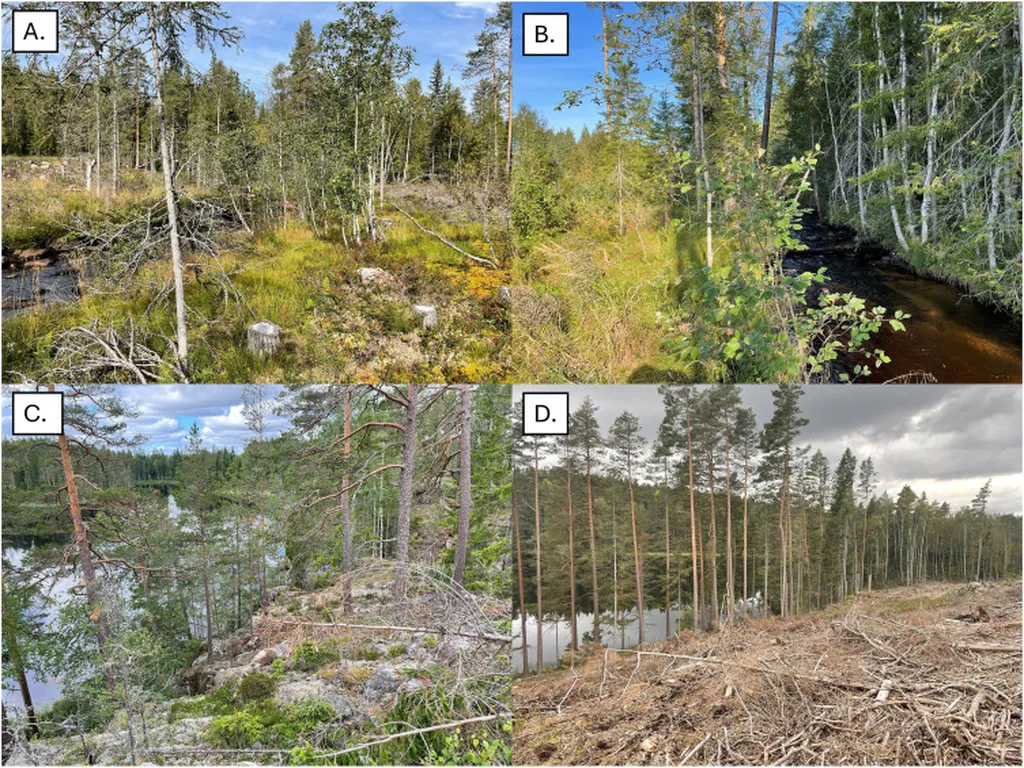In the heart of Norway’s lush forests, a silent battle is being waged between the drive for timber production and the need to preserve the delicate ecosystems that thrive along watercourses. A recent study published in ‘Trees, Forests and People’ has shed light on the ongoing struggle to balance these competing interests, with significant implications for the agriculture and forestry sectors.
The research, led by Ane Christensen Tange of the University of Inland Norway and Glommen-Mjøsen Skog SA, delves into the management of riparian forest buffers—critical zones of vegetation that protect watercourses from the impacts of forest harvesting. These buffers play a vital role in maintaining water quality, supporting biodiversity, and mitigating erosion. Yet, as the study reveals, their management in Norway often falls short of the standards set by the Programme for the Endorsement of Forest Certification (PEFC), the world’s largest forest certification system.
The team conducted inventories of 27 randomly selected stands in South-Eastern Norway, focusing on species composition, stand structure, and site conditions. Their findings were stark: 85% of the buffers were narrower than the prescribed standard width of at least 10 meters. “We found that the mean and median buffer widths were 7.0 meters and 5.7 meters, respectively,” Tange explains. “This indicates that a buffer width norm narrower than the requirement has been established.”
Despite these narrow buffers, 46% of the stands still met certification requirements due to exemptions allowing reduced buffer widths. This loophole, while providing some flexibility, raises questions about the effectiveness of the current certification system in ensuring robust ecological protection.
The study also found that while the largest trees were harvested, the overall composition of the riparian buffer and tree structure were largely maintained after harvest. However, the narrow buffers suggest that the PEFC water-protection requirements are yet to be fully implemented in forest management in Norway. “Improvements are warranted from companies responsible for forest planning, harvest, and silviculture,” Tange emphasizes.
The commercial impacts of these findings are significant. For the agriculture sector, which often relies on healthy ecosystems for sustainable practices, the under-implementation of riparian buffer standards could lead to long-term ecological degradation. This, in turn, could affect water quality and biodiversity, both of which are crucial for agricultural productivity and sustainability.
For the forestry industry, the study highlights the need for better adherence to certification standards. While exemptions provide some leeway, the narrow buffers observed in the study suggest that a more rigorous approach to buffer management is necessary to ensure long-term ecological health and compliance with certification requirements.
The research also points to the need for further investigation into the factors influencing buffer management decisions. As Tange notes, “We found no site characteristics that could explain the narrow buffers.” This gap in understanding underscores the need for more comprehensive studies that can provide insights into the subjective assessments that guide buffer management.
Looking ahead, this research could shape future developments in the field by prompting a reevaluation of current buffer management practices. It may also lead to more stringent enforcement of certification standards and the development of better guidelines for forest planning and silviculture. For the agriculture and forestry sectors, this could mean a shift towards more sustainable and ecologically sound practices, ultimately benefiting both the environment and the industries that depend on it.
As the debate over riparian buffer management continues, one thing is clear: the health of Norway’s watercourses and the ecosystems that depend on them hang in the balance. The findings of this study serve as a wake-up call, urging stakeholders to take action and ensure that the delicate equilibrium between production and conservation is maintained.

